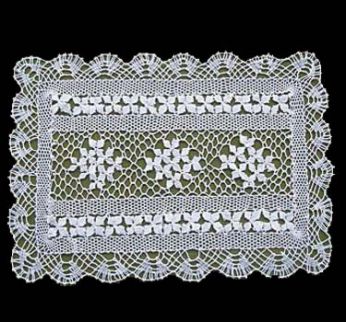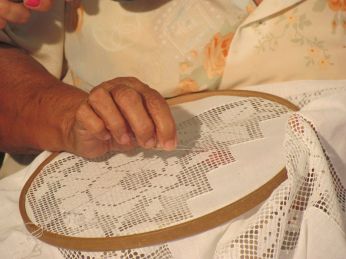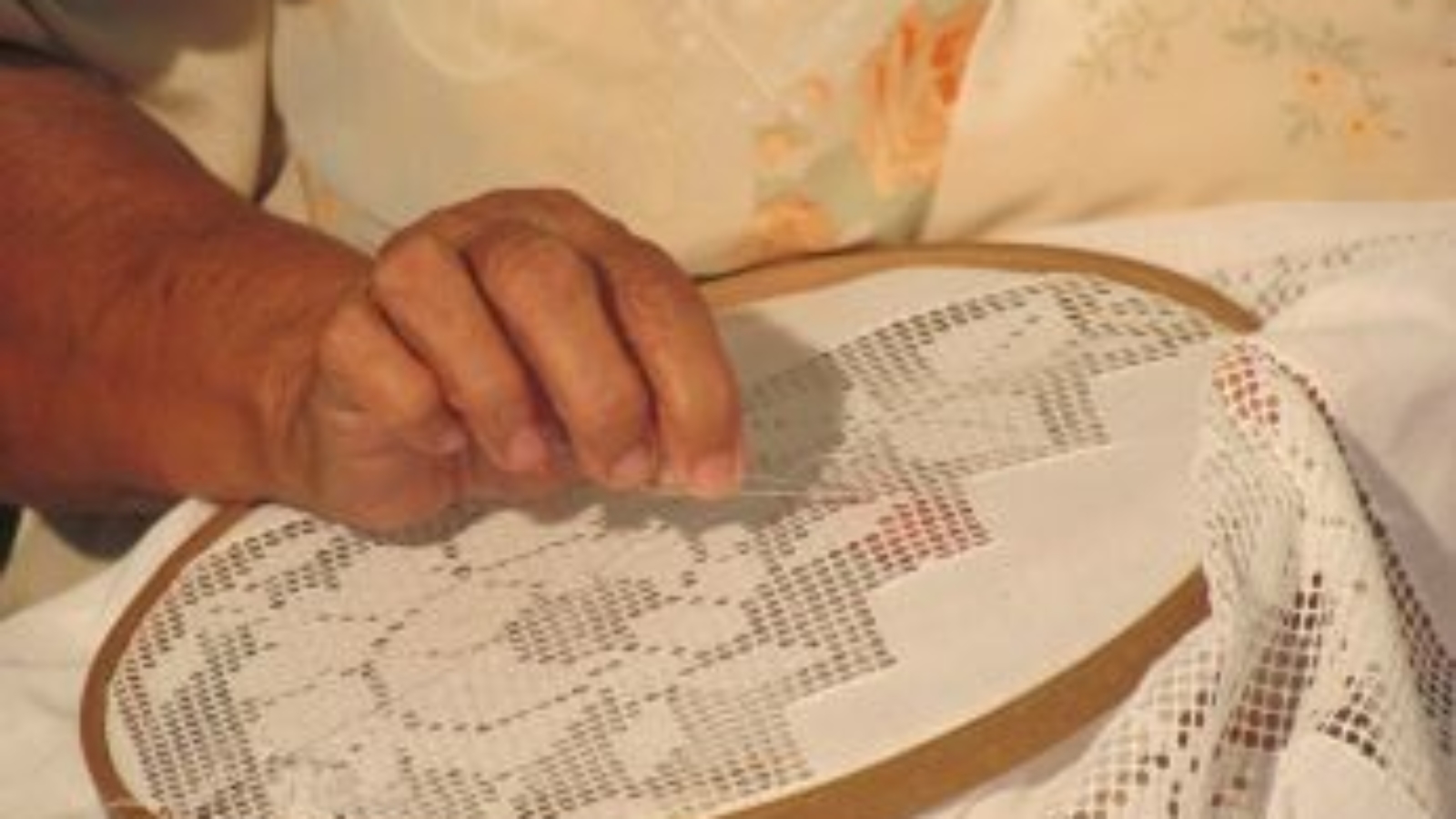The bobbin lace of Maria do Carmo are for sale in a tourist spot in the Barra of Tabatinga, south of Natal, Rio Grande do Norte, in the same way that many other lacemaker women make to sell their work in various Brazilian coastal regions and to help the familiar income. It is uncertain the origin of the bobbin, labyrinth and renaissance.
It is only known that the tradition of making lace is passed from mother to daughter and remains until today in the north (Pará), northeast (Alagoas, Ceará, Maranhão, Paraíba, Pernambuco, Rio Grande do Norte, Bahia and Sergipe), in southeast (Rio de Janeiro), and south (Santa Catarina).
Maria do Carmo Alves learned to make bobbin by the hands of his mother, as a child, and now, over 70 years, shows for anyone interested her ability to move bobbins and produce the most beautiful wefts in wires fixed on the large pad filled with straw of banana tree. While she moves with dexterity the piece of wood, Maria do Carmo tells with naturality that she make lace, just like almost every women in her community, and that learning to make lace is “something that is taught from woman to woman, among family”.

A research of the Institute for State Patrimony of Cultural Heritage of Rio de Janeiro, presents a study about the lacemakers of the coastal region in the state. “The bobbin lace is, without doubt, one of the oldest and richest art manifestations of our people.It is almost always done by women of humble condition that apply their skill, dexterity and creativity in the art that are driven by a true devotion “.
Labyrinth
 The labyrinth lace is also artesanal activity of traditional culture developed at the Northeast, especially in Paraíba and Ceará. It is a type of lace made by reeling off the fabric, uniting wires and filling the spaces with serging in line, forming a wide variety of designs and whose end result is a unique delicacy. There are a few data about the origin of the labirynth lace, but it was certainly brought by the portuguese women.
The labyrinth lace is also artesanal activity of traditional culture developed at the Northeast, especially in Paraíba and Ceará. It is a type of lace made by reeling off the fabric, uniting wires and filling the spaces with serging in line, forming a wide variety of designs and whose end result is a unique delicacy. There are a few data about the origin of the labirynth lace, but it was certainly brought by the portuguese women.
Adeilde Ferreira de Menezes is artisan from João Pessoa who is proud in showing how much has appeared in newspapers and magazines for the beauty of her work on labirynth lace. She is 70 years old and confess that has learned how to make lace with the neighbor when she was still a child. “I fled from the view of my mother through the kitchen door, that did not let me go to anybody’s home, and stoood there watching the neighbor embroider”, she says.
Probably the art of lace in Brazil has been widespread since the nineteenth century, considering that at the beginning of colonization a few were the Brazilians who dressed in fabrics, nobler than fine fabrics imported from Europe and the East. The slaves and Indians wore simple and crude clothes.
Regardless of the origin, if it was Portuguese woman (spindles and labyrinth) or nuns (Renaissance), is not as relevant now as the fact that the Brazilian lacemakers are part of the popular imagination, especially in the Northeast, and they are transmitters of knowledge through the ages, artists in potential because with patience and mastery follow making laces just as many generations of women in her family did, updating and revising old points, and keeping the tradition alive.

